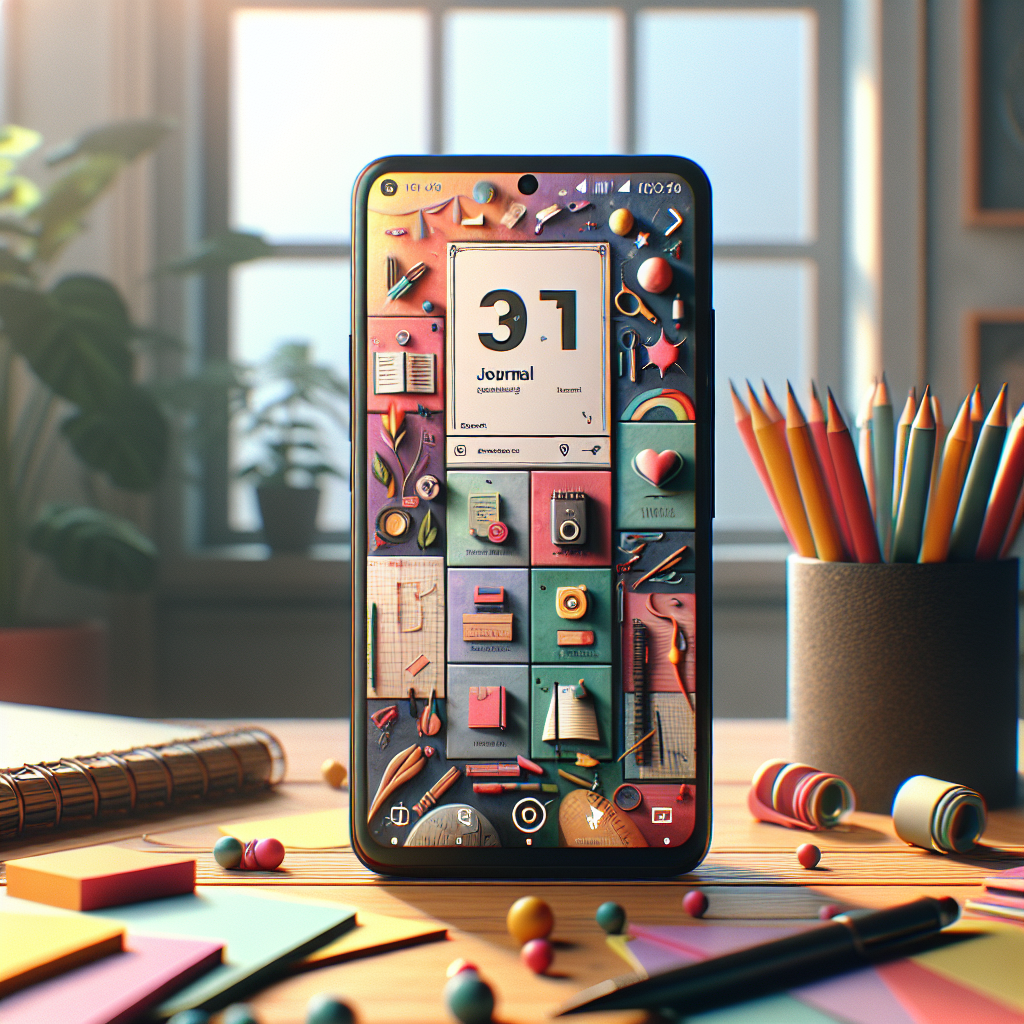Unlock Your Creativity with a Mobile App Journal!
In today’s fast-paced digital world, nurturing creativity can often feel like a daunting task. However, a mobile app journal presents a unique and innovative solution to this challenge. These applications are designed to provide users with a versatile platform for daily reflection, idea generation, and self-expression.
With features such as customizable templates, multimedia integration, and seamless sharing options, mobile app journals cater to various creative processes. Users can jot down thoughts, sketch ideas, or even record audio notes—all in one convenient location. This flexibility not only enhances creativity but also promotes better organization of ideas, allowing users to track their creative journeys effectively.
Moreover, many mobile app journals include motivational prompts and community features that foster collaboration and inspiration among users. By engaging with a broader network, individuals can gain fresh perspectives and encouragement, further fueling their creative endeavors.
For those looking to embark on a creative journey or enhance their existing practices, integrating a mobile app journal into your routine could be the key. Get a free quote to discover how a custom mobile app can cater to your creative needs!
Benefits of Using a Mobile App Journal for Creativity

Utilizing a mobile app journal for creativity offers numerous advantages that can greatly enhance both the creative process and personal growth. Here are some of the key benefits:
- Enhanced Organization: Mobile app journals allow for easy categorization and tagging of entries, making it simple to retrieve specific ideas or reflections whenever needed.
- Accessibility: With a mobile app, your journal is always at your fingertips. Whether you’re commuting or enjoying a quiet moment at home, you can capture inspiration instantly.
- Multimedia Integration: Unlike traditional journals, mobile app journals enable users to incorporate images, videos, and audio recordings, enriching the documentation of thoughts and ideas.
- Motivational Features: Many apps come with built-in prompts or inspirational quotes that can help overcome creative blocks and stimulate new thoughts.
- Community Support: Some mobile journals offer social sharing options, connecting you with a community of like-minded individuals for feedback, collaboration, and support.
By embracing these benefits, users can foster a more productive and inspiring creative environment, ultimately leading to improved self-expression and personal development.
Features to Look for in a Mobile App Journal

When searching for the ideal mobile app journal, it’s essential to consider various features that can significantly enhance your journaling experience. Here are some key functionalities to look for:
- User-Friendly Interface: A clean and intuitive layout will make writing and navigating your journal a seamless experience.
- Customization Options: Look for apps that allow you to personalize the layout, font, colors, and themes, enabling you to create a journaling environment that reflects your style.
- Search and Filter Capabilities: The ability to quickly find specific entries or themes through search bars and filters can save time and enhance organization.
- Cloud Syncing: Ensure your app supports cloud syncing to prevent data loss and access your journal from multiple devices.
- Security Features: Consider apps with password protection or encryption to keep your personal thoughts secure and private.
- Integration with Other Tools: Check for compatibility with productivity tools, such as calendars or to-do lists, allowing for a more holistic approach to managing your creative tasks.
Choosing a mobile app journal that includes these features can lead to a more satisfying and effective journaling experience, empowering you to unlock your creativity fully.
How to Start Your Own Mobile App Journal
Starting your own mobile app journal can be an exciting journey that enhances your creativity and self-reflection. Here’s a step-by-step guide to get you started:
- Choose the Right App: Begin by selecting a journaling app that aligns with your needs. Look for features like customization, security, and ease of use.
- Set Your Intentions: Determine what you want to achieve with your journal. Whether it’s daily reflections, tracking your goals, or capturing creative ideas, having clear intentions can guide your writing.
- Create a Routine: Consistency is key to journaling. Set aside a specific time each day or week to write in your app. This could be in the morning to set your intentions or in the evening to reflect on the day.
- Start Writing: Don’t overthink it! Begin with simple entries. You can write about your day, list things you’re grateful for, or jot down ideas that inspire you. The key is to let your thoughts flow without judgment.
- Incorporate Prompts: If you find yourself struggling to write, consider using prompts to spark creativity. Journaling prompts can be found online or created by you based on your interests.
- Review and Reflect: Periodically revisit your entries to reflect on your thoughts and progress. This practice can provide insights into your journey and help you track your growth.
By following these steps, you can create a meaningful mobile app journal that serves as a powerful tool for creativity and self-discovery.
Tips for Maximizing Your Creativity with Mobile Journaling

To truly harness the power of a mobile app journal for creativity, consider these practical tips that can elevate your journaling experience:
- Embrace Free Writing: Allow yourself to write freely without worrying about grammar or structure. Set a timer for 10-15 minutes and write continuously. This practice can unlock hidden thoughts and ideas.
- Use Visual Elements: Incorporate images, sketches, or even doodles in your journal entries. Visual elements can enhance your creativity and provide a multi-dimensional approach to expressing your thoughts.
- Experiment with Different Formats: Don’t limit yourself to traditional text entries. Explore lists, bullet points, or mind maps to capture your thoughts. Changing formats can stimulate different areas of your brain and inspire new ideas.
- Set Challenges: Challenge yourself with creative prompts or themes for each week. This could include writing about specific topics or limiting your entries to a certain word count, which can spark innovative thinking.
- Establish a Creative Space: Find a comfortable and inspiring environment to journal. Whether it’s a cozy corner at home or a favorite café, a dedicated space can help you relax and focus, enhancing your creativity.
- Reflect on Your Progress: Regularly look back at your previous entries. Reflecting on your growth and evolution can provide motivation and inspire new ideas, keeping your creative juices flowing.
By implementing these strategies, you can maximize your creativity with your mobile app journal and turn your journaling practice into a rich source of inspiration and self-expression.
Conclusion: Embrace Your Creativity with Mobile Journaling

In a world where creativity can often feel stifled, a mobile app journal offers a refreshing outlet for self-expression and reflection. By embracing this innovative tool, you can unlock your creative potential and organize your thoughts in ways that resonate with you personally.
Mobile journaling not only allows for flexibility and convenience but also encourages you to engage in daily practices that foster creativity. Whether you’re jotting down fleeting ideas, sketching your thoughts, or reflecting on your day, the possibilities are endless. As you explore the tips and strategies discussed, you’ll find that your mobile journal becomes more than just a collection of entries; it transforms into a vital companion on your creative journey.
Ready to take the next step in your creative exploration? Get a free quote from NS804 and discover how we can help you develop a custom mobile app journal that fits your unique needs and enhances your journaling experience.




































